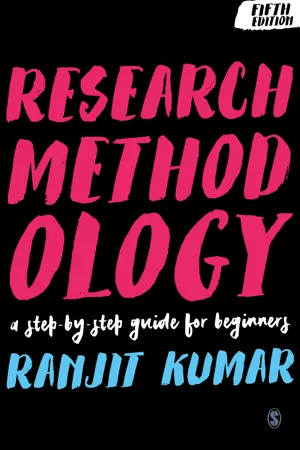Psychology
Matched Pairs Design
Matched pairs design is a research method used to control for individual differences in participants. In this design, each participant is matched with another participant who is similar in terms of relevant characteristics, such as age or IQ. The two participants are then randomly assigned to different experimental conditions.
Written by Perlego with AI-assistance
Related key terms
Related key terms
1 of 4
Related key terms
1 of 3
3 Key excerpts on "Matched Pairs Design"
- eBook - ePub
Teacher-Led Research
Designing and implementing randomised controlled trials and other forms of experimental research
- Richard Churches, Eleanor Dommett(Authors)
- 2016(Publication Date)
- Crown House Publishing(Publisher)
Figure 3.6 ). In this design, the control condition will be the usual whole class pedagogy and the intervention will be the use of group work, with the two conditions counterbalanced.Figure 3.6. Example of a classroom-based within-participant design.Figure 3.7. Example of a classroom-based within-participant design with ‘double’ counterbalancing.A further refinement to control for order effect (related to having done the cities lesson before the countryside lesson) would be to double up the number of children involved and double counterbalance out these effects (as in Figure 3.7 ).Matched Pairs Design
Earlier on, when we talked about the limitations of a between-participant design, we highlighted the obvious difficulty presented by using different participants in each condition. Namely, that you can end up measuring not the intervention that you exposed people to but the differences between them. We also pointed out that you can’t use a within-participant design if the effects of your treatment are irreversible.There is, however, another option that is an extension of the between-participant design. This is called a matched pairs (or case-matched) design. This type of design aims to produce similar benefits to the within-participant design with regard to reducing the individual differences between people in the study. To conduct a Matched Pairs Design you begin by ‘matching’ up participants in pairs according to individual characteristics that you think might confound your research if you did not control for them. For example, the two highest attaining girls might be paired and the two highest attaining boys and so on. Once you have all your participants paired in such a way, you then randomly allocate each member of a pair to the control or intervention group. In this way, you force a balance of characteristics between your participant groups while also including randomisation. In Chapter 4 we will teach you how to do this in practice. Figure 3.8 - eBook - ePub
Research Methodology
A Step-by-Step Guide for Beginners
- Ranjit Kumar(Author)
- 2018(Publication Date)
- SAGE Publications Ltd(Publisher)
Comparative groups are usually formed on the basis of their overall comparability with respect to a relevant characteristic in the study population, such as socioeconomic status, the prevalence of a certain condition or the extent of a problem in the study population. In matched studies, comparability is determined on an individual-by-individual basis. Two individuals from the study population who are almost identical with respect to a selected characteristic and/or condition, such as age, gender or type of illness, are matched and then each is allocated to a separate group (the matching is usually done on an easily identifiable characteristic). In the case of a matched control experiment, once the two groups are formed, the researcher decides through randomisation or otherwise which group is to be considered control, and which experimental. The matched design can pose a number of challenges:Figure 8.11 Double-control designsFigure 8.12 Comparative experimental design- Matching increases in difficulty when carried out on more than one variable.
- Matching on variables that are hard to measure, such as attitude or opinion, is extremely difficult.
- Sometimes it is hard to know which variable to choose as a basis for matching. You may be able to base your decision upon previous findings, or you may have to undertake a preliminary study to determine your choice of variable.
The placebo design
A patient’s belief that s/he is receiving treatment can play an important role in his/her recovery from an illness even if treatment is ineffective. This psychological effect is known as the placebo effect. A placebo design attempts to determine the extent of this effect. A placebo study involves two or three groups, depending on whether or not the researcher wants to have a control group (Figure 8.13 ). If the researcher decides to have a control group, the first group receives the treatment, the second receives the placebo treatment, and the third – the control group – receives nothing. The decision as to which group will be the treatment, the placebo or the control group can also be made through randomisation.Placebo effect: A patient’s belief that s/he is receiving a treatment plays an important role in his/her recovery even though the treatment may be fake or ineffective. The change occurs because a patient believes that s/he is receiving the treatment. This psychological effect that helps a patient to recover is known as the placebo effect.Figure 8.13 The placebo designCheckpointExperimental designsOther designs commonly used in quantitative research
There are some study designs that may be classified in the typology described above but, because of their uniqueness and prevalence, they have acquired their own names. They are therefore described separately below. - eBook - ePub
Quantitative and Statistical Research Methods
From Hypothesis to Results
- William E. Martin, Krista D. Bridgmon(Authors)
- 2012(Publication Date)
- Jossey-Bass(Publisher)
Matching participants across condition groups based on one or more extraneous variables can be used to rule out or hold constant their confounding effects. A researcher might match participants in a treatment and control condition based on gender, height, and age. A woman 5′ 0′ to 5′ 2′ in height who is between the ages of 20 and 25 years is matched to participant with similar characteristics in the other group. All participants would be matched on homogeneous characteristics. Sophisticated propensity score matching methods have been refined in recent years, which have enhanced the rigor of quasi-experimental designs (see Cook & Steiner, 2010).The most important way to control extraneous variance is using random assignment . Each participant is assigned to experimental and control group conditions totally by chance. Tables of random numbers or computerized random number generators are used to accomplish random assignment. Random assignment makes groups randomly similar to each other. It is less likely that one group of participants will have more or less extraneous variance than another group when groups are randomly assigned from the same sample. Shadish, Cook, and Campbell (2002) reported the benefits of random assignment to generalized causal inference as: “equating groups before treatment begins, by making alternative explanations implausible, by creating error terms that are uncorrelated with treatment variables, and by allowing valid estimates of error terms” (p. 252).Another method of controlling extraneous variables is to use blinded procedures . Participants are not informed about the nature or purpose of a study in a single-blind procedure to minimize participants behaving in reaction to the purpose of the study. In a double-blind procedure neither the participants nor the researchers are informed of the treatment conditions that the participants receive. This procedure helps minimize experimenter expectancy effects and participant reaction (demand) effects. This procedure usually requires that other people select groups, administer treatment, and record results. In a triple-blind procedure neither the participants nor the persons administering the treatment nor those evaluating the response to treatment know which participants are receiving a given treatment. A partial-blind procedure
Index pages curate the most relevant extracts from our library of academic textbooks. They’ve been created using an in-house natural language model (NLM), each adding context and meaning to key research topics.
Explore more topic indexes
Explore more topic indexes
1 of 6
Explore more topic indexes
1 of 4


